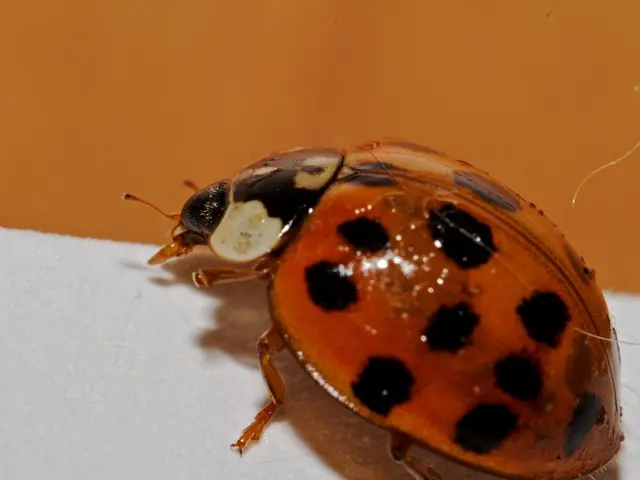Residing near coastlines contaminated with microplastics may potentially harm your cardiovascular system.
Microplastics Taking Their Toll: Unmasking the Heartbreaking Connection Between Marine Pollution and Health Risks
Did you know that microplastics are turning up everywhere - in the soil, water, air, and even inside our bodies? A groundbreaking study from the United States is shedding light on a concerning link between where you call home and the state of your heart, especially if your postal zip code is close to heavily polluted ocean waters.
Residing in a U.S. coastal county that borders ocean waters with extremely high concentrations of microplastics might boost the risk of heart and metabolic diseases, such as Type 2 diabetes, coronary artery disease, and stroke, according to new research.
As cardiology expert Sarju Ganatra put it, "This is one of the first extensive studies to suggest that living near waters heavily polluted with microplastics may be linked to chronic health conditions. Plastic pollution is not just an environmental issue - it may also be a public health issue."
Microplastics refer to plastic particles smaller than 5 millimeters that are formed when larger plastic waste degrades over time. They can trace their origins back to familiar sources like food packaging, synthetic clothes, cosmetics, and paint. Once these minute particles make their way into marine ecosystems, they don't stay showered in the water column. They seep into the ground through seawater intrusion, a process where seawater is enmeshed with groundwater resources, potentially contaminating groundwater aquifers in coastal areas.
In this revealing study, researchers grouped U.S. coastal counties according to the level of microplastic pollution within 200 nautical miles of the shoreline. Next, they compared rates of three major cardiometabolic conditions: Type 2 diabetes, coronary artery disease, and stroke.
The findings were arresting. Residents living in counties with extremely high marine microplastic pollution exhibited:
- 18% higher adjusted prevalence of Type 2 diabetes
- 7% higher for coronary artery disease
- 9% more strokes.
Notably, the association between high microplastic pollution levels and a higher incidence of cardiometabolic diseases persisted even after taking into account age, gender, access to healthcare providers, socioeconomic status, and environmental factors.
It is crucial to note that the potential damage from microplastic exposure doesn't end at the coastline.
"While this study focused on pollution in ocean water, pollution alone doesn't remain confined to the sea. Microplastics are everywhere - in drinking water, food, especially seafood, and even in the air we breathe," cautions Ganatra. "Though this study looked at microplastic particles collected from ocean water and the health status of people residing in nearby communities, the fact remains that microplastic pollution impacts us all, regardless of geographic location."
The research team is currently planning follow-up studies to evaluate how microplastic exposure affects biological markers of inflammation and cardiovascular stress.
"This investigation adds to a growing body of evidence that the trash we discard into the environment eventually comes back to haunt us. It's high time we transition from being aware of this issue to taking action," asserts Ganatra. "We implore policymakers to tackle plastic pollution as both an environmental catastrophe and a potential public health crisis."
This research was published in the American Heart Association.
- Science Alert ### Seabirds face hidden dangers from eating plastic
Originally published by Cosmos as Living near microplastic-polluted coastlines could compromise your heart
- Seabirds are also in danger due to consumption of plastic, joining the concerns around microplastics and health risks.
- As plastic waste is ingested by seabirds, it poses hidden dangers to their well-being.
- Plastic consumption by seabirds is a growing concern in the field of wildlife conservation and wildlife health.
- Dietary exposure to microplastics in seabirds could potentially lead to health issues, including gastrointestinal problems and infection.
- Furthermore, the presence of microplastics in the marine food chain puts various species at risk, with seabirds at the forefront due to their foraging habits and consumption of small prey.
- To mitigate the health risks associated with microplastic ingestion, research is being conducted to find effective methods for reducing plastic waste in the ocean and workplace-wellness initiatives aimed at promoting sustainable practices.
- Sustainable living and responsible waste management practices are vital to protect both human health and marine ecosystems.
- Mens-health organizations are recognizing the need to address plastic pollution as a concern that intersects with men's health due to increased rates of cardiovascular disease and other chronic conditions among men living near microplastic-polluted areas.
- Skin-care companies are also taking action against plastic waste by offering skincare products packaged in eco-friendly and biodegradable materials.
- The medical and climate-change communities are collaborating to understand the long-term effects of microplastic exposure on mental-health and overall well-being.
- Aging populations may be more susceptible to the health consequences of microplastic exposure, as the older population is at higher risk for chronic diseases and weakened immune systems.
- Womens-health organizations are urging for targeted interventions to address the specific concerns that microplastic exposure may have on reproductive health and hormonal imbalances in women.
- Parenting resources are increasingly emphasizing the importance of reducing plastic use in the household to ensure a safe and healthy environment for children.
- Weight-management strategies should also consider the potential role that microplastics may play in weight gain and obesity due to their interaction with the endocrine system.
- Many in the industry are working towards reducing their carbon footprint and adopting sustainable practices as a response to growing consumer demand for eco-friendly products.
- Medicare providers are recognizing the need for screening and management of chronic conditions related to microplastic exposure, as rates of cardiometabolic diseases increase among elderly populations in polluted areas.
- Cbd companies are also taking a stand against plastic pollution by offering sustainable packaging options and reduced dependence on single-use plastics.
- The Canadian municipal water supply has been found to contain microplastics, raising concerns around the safety of drinking water and potential health implications.
- Environmental-science and energy experts are advocating for increased adoption of renewable energy sources and energy-efficient technologies to reduce reliance on fossil fuels and decrease the overall amount of plastic waste generated.
- Manufacturing companies are developing and implementing innovative solutions for producing biodegradable and compostable alternatives to single-use plastics.
- The rate of microplastic pollution is affecting retail sales, with consumers becoming more environmentally conscious and seeking out brands that prioritize sustainable and eco-friendly practices.
- Interior-design trends are leaning towards using recycled and sustainable materials as an approach to reducing plastic waste and promoting healthier living spaces.
- Cooking and recipe blogs are offering advice on minimizing plastic use while still creating delicious and nutritious meals for families.
- Home-improvement stores are stocking a variety of eco-friendly alternative products to plastic, including reusable water bottles, straws, and produce bags.
- The increased visibility of microplastic pollution in media and popular culture is fueling individual efforts towards plastic reduction and waste management across lifestyle choices.
- Investing in sustainable sectors and socially responsible companies is becoming an attractive option for those seeking to address the problem of microplastic pollution while also working towards financial wealth-management.







